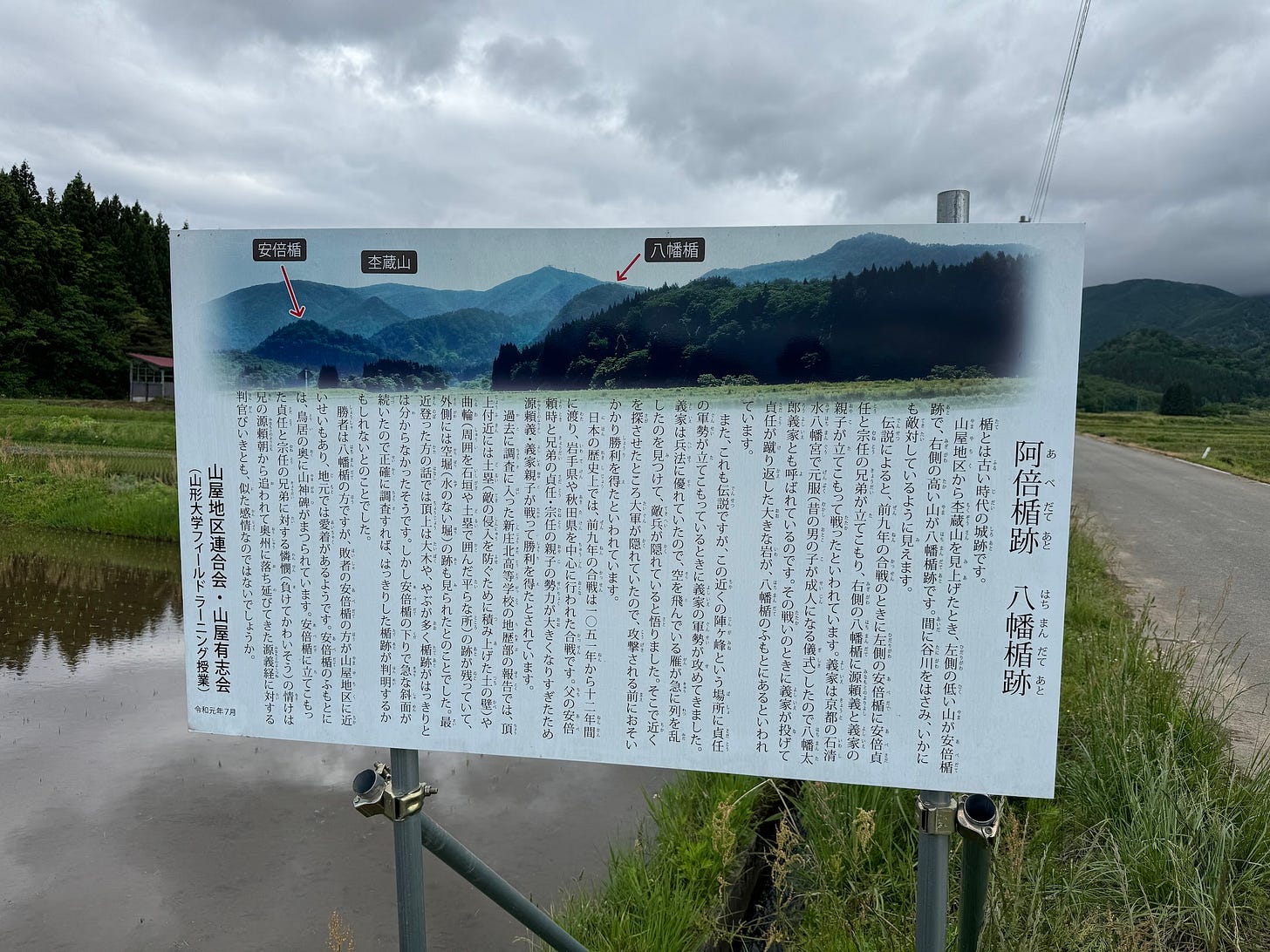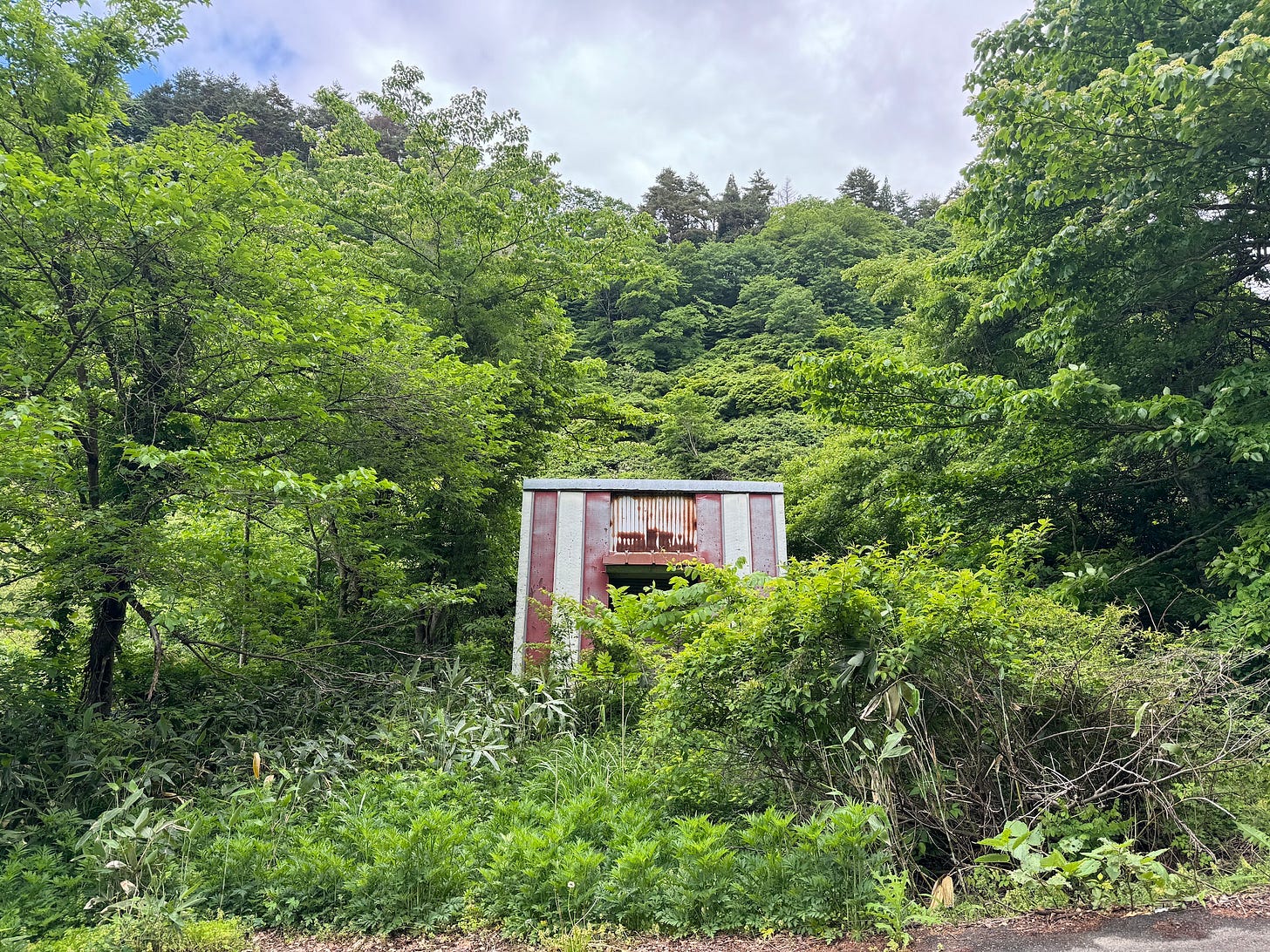Abe Shinzo, Kurosawa Akira, The Kami of War, and a flock of geese?
Do you like rabbit holes? Because this is a rabbit hole.
Kia ora Koutou, Tim Bunting, Kiwi Yamabushi here on the Japan you never knew you wanted to know.
I have a question for you:
What do Abe Shinzo, Kurosawa Akira, the Kami of War, and a flock of geese have to do with each other?
Read on for the answer.
'This mountain is loved by locals, takes less than three hours to summit, and has a hut’.
Cool story bro.
Anything else?
All of the mountains of Yamagata have been loved by locals. All of them tell me how long it takes to climb them. All of them have a hut.
Ok, maybe not all of them.
But still, at the very least, all of the mountains of Yamagata explored so far have had some sort of interesting story for me to discover and share with you.
We’re talking more than a few former mountain castles, Shugendo mountains for us yamabushi, mountains of myth and legend with fantastic Yokai,
the list goes on.
But Mokuzo-yama? A mountain at the base of the Kamuro Alps? Home to Hachimori-yama where Tengu are said to do water ablutions? Not to mention the asymmetric ridges, deep gorges and abundant waterfalls of Komata-yama, Fire-starter mountain Hiuchi-dake, or the namesake Kamuro-san?
Surely there must be something?
Turns out there is.
Only, to find out what it is, you first have to venture to the mountain and keep a lookout for a sign in a rice field on the side of the road.
A sign in a rice field on the side of the road!
That’s how we’re going to learn about this place. Not on the TV. No one watches that anymore. And not on the Internet either, that’s too… modern?
Wow. Such helpful.
No. A single sign in a rice field on the side of the road was the only hint something went down here.
But not just anything.
An event involving the ancestors of more than a few of Japan’s former Prime Ministers, its most famous film director, and a samurai with the title ‘Son of Hachiman; the Kami of War’. Oh, and what led to this samurai gaining the title Son of the Kami of War?
Why a flock of geese of course.
You see, from 1051 to 1062 was the Zenkunen no Eki, 前九年の役, known in English as the Former Nine Years’ War. Obviously someone can’t count, that’s more than nine years. However, apparently within a 12-year period there were extensive periods of ceasefire and peace, or something.
Either way,
at that time northern Japan was populated with Emishi tribes (also Ebisu or Ezo). These tribes resisted Imperial Court influence, a bit like Asterix and the Romans. To keep the Emishi forces at bay, a member of The Abe Clan had long held the position of Chinjufu-Shogun, a sort of Commander in Chief. At the time the position belonged to a certain Abe no Yoritoki (notice the surname Abe).
However, the Imperial Court wasn’t very happy with how Abe was running the show. Apparently Abe levied taxes and confiscated property without the permission of the Governor, a big no-no in those times.
Naturally, the Governor was not happy about this. So, he called for support from the Imperial Court in Kyoto. The Imperial Court weren’t having a word of it so they fired the governor, and appointed Minamoto no Yoriyoshi of the Minamoto Clan as both Governor and Chinjufu-Shogun. Not only that, they sent him and his son, the 15-year-old Yoshiie no Minamoto, to stop the rebellious Abe Clan with his own hands.
With his own hands.
There were two main battles during the Former Nine Years’ War; The Battle of Kawasaki in 1057, and The Siege of Kuriyagawa in 1062. Abe no Yoritoki was killed before The Battle of Kawasaki, but thankfully his son Sadato took over fighting with his brother Muneto, and was able to defeat the Minamoto.
However, the war came to an end during The Siege of Kuriyagawa. The Minamoto Clan received backup from The Kiyohara Clan, and attacked the Abe stronghold at Kuriyagawa. They managed to make Abe surrender by diverting the water supply, storming the earthworks and stockade, and setting the place on fire. You would think that would do it, but it took Abe no Sadato two days to surrender. To make matters worse, in early 1063, Minamoto no Yoshiie is said to have brought Abe no Sadato’s head to Kyoto, along with a number of others’.
What does this have to do with Mokuzo-yama?
According to a sign in a rice field on the side of the road, Mokuzo-yama was home to some of the fighting during the Zenkunen no Eki. There are two smaller peaks on Mokuzo-yama separated by a river. Each of these peaks held a fortress during the war, with the Abe Tate (fortress) on the left, and the Minamoto fortress, called the Hachiman Tate, on the right.
I don’t know how anyone can prove this, but apparently a large rock thrown by Yoshiie and kicked back by Sadato is located at the base of the mountain.
Apparently.
What is known for sure though, is that when the highly reputable Shinjo North High School Geography and History Club searched the area they found remnants of earthen walls (constructed to prevent enemy intrusion) and flat areas surrounded by stone or earthen walls at the summit. There were also traces of dry moats common in older fortifications.
Although the summit was overgrown with large trees and bushes, making it difficult to clearly identify the ruins, steep slopes on the Abe Tate side suggested that a detailed investigation might reveal more.
But that’s not all.

A sign in the rice field on the side of the road tells of yet another legend.
While Yoshiie was preparing to mount an attack, he noticed wild geese suddenly losing formation in the sky. This told him something was up, and sure enough, when searching the area they found a large army of Abe forces concealed in the bushes. Yoshiie was able to attack first, and gain victory.
This was but the start of Yoshiie’s exploits. Over the years Yoshiie was able to prove himself a master strategist, and he gained the moniker Most Valorous Warrior in the Land (天下第一武勇之士).
But that’s not all.
Yoshiie posthumously gained the title Hachiman Taro, Son of Hachiman. Hachiman is the Shinto Kami of war, and Yoshiie also became the Patron Ancestral Kami of the Minamoto Clan.
But that’s not all.
Abe no Yoritoki is apparently former Prime Minister Abe Shinzo’s ancestor through Abe no Muneto, and Kurosawa Akira’s ancestor through Sadato.
But it doesn’t take a sign in a rice field on the side of the road to know that.
Or maybe it does.
'This mountain is loved by locals, takes less than three hours to summit, and has a hut’.
Cool story bro.
Daily Yamabushi for This Week

Daily Yamabushi posts for the week of June 14 to 20, 2024.
Read Daily Yamabushi for free at timbunting.com/blog or Medium.com.
Mountains of Wisdom: Tell Your Friends!

Get more content on the Japan you never knew you wanted to know on my blog, YouTube, Instagram, Facebook, Twitter, LinkedIn, Threads, or Medium.com.
And if you like what I do, please don’t forget to:
Or if you haven’t already:
Ka kite ano.
Tim.





So informative and funny! I liked your comparison of the Emishi to Asterix!
Now you’ve got me wanting a Hachiman name…